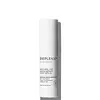What's inside
What's inside
 Key Ingredients
Key Ingredients

 Benefits
Benefits

 Concerns
Concerns

 Ingredients Side-by-side
Ingredients Side-by-side

Water
Skin ConditioningPropanediol
SolventDimethicone
EmollientCetearyl Ethylhexanoate
EmollientAlcohol Denat.
AntimicrobialAllyl Methacrylates Crosspolymer
Emulsion StabilisingDipropylene Glycol
HumectantAmmonium Polyacryloyldimethyl Taurate
Emulsion StabilisingAcrylamide/Sodium Acryloyldimethyltaurate Copolymer
Emulsion StabilisingRetinol
Skin ConditioningHydrogenated Lecithin
EmulsifyingPolysorbate 20
EmulsifyingIsohexadecane
EmollientPhenoxyethanol
PreservativeCaprylyl Glycol
EmollientIsopropyl Myristate
EmollientSodium Citrate
BufferingBoswellia Serrata Gum
MaskingPolysorbate 80
EmulsifyingBHT
AntioxidantDimethiconol
EmollientTrisodium Ethylenediamine Disuccinate
Bisabolol
MaskingSorbitan Oleate
EmulsifyingCitric Acid
BufferingPropyl Gallate
AntioxidantWater, Propanediol, Dimethicone, Cetearyl Ethylhexanoate, Alcohol Denat., Allyl Methacrylates Crosspolymer, Dipropylene Glycol, Ammonium Polyacryloyldimethyl Taurate, Acrylamide/Sodium Acryloyldimethyltaurate Copolymer, Retinol, Hydrogenated Lecithin, Polysorbate 20, Isohexadecane, Phenoxyethanol, Caprylyl Glycol, Isopropyl Myristate, Sodium Citrate, Boswellia Serrata Gum, Polysorbate 80, BHT, Dimethiconol, Trisodium Ethylenediamine Disuccinate, Bisabolol, Sorbitan Oleate, Citric Acid, Propyl Gallate
Alternatives
Ingredients Explained
These ingredients are found in both products.
Ingredients higher up in an ingredient list are typically present in a larger amount.
Polysorbate 20 is made by combining ethoxylation of sorbitan, ethylene oxide, and lauric acid. It is a mild cleansing agent, surfactant, and emulsifier.
As a surfactant, it helps collect dirt and oils for washing. Emulsifiers prevent oils and water from separating.
Polysorbate 20 also adds scent to a product. Since it is made using sorbitol, it has a sweet scent. Sorbitol can also be found in fruits such as apples and peaches.
The lauric acid used to create Polysorbate 20 is often derived from coconuts.
Polysorbate 20 may not be fungal acne safe.
Learn more about Polysorbate 20Retinol is a gold-standard ingredient for anti-aging. It is a form of Vitamin A and belongs to the class of retinoids that also includes tretinoin.
Why is retinol famous?
It has the most scientific studies backing up its skin benefits out of all the non-prescription ingredients.
Retinol is proven to:
This is why retinol is effective at removing wrinkles, fading dark spots, treating acne, and reducing the appearance of pores.
Studies show retinol is less effective when exposed to UV. Be sure to look for appropriate packaging to keep your retinol potent (similar to Vitamin C).
Using retinol or any retinoids will increase sun-sensitivity in the first few months. Though studies show retinoids increase your skin's natural SPF with continuous use, it is best to always wear sunscreen and sun-protection.
We recommend speaking with a medical professional about using this ingredient during pregnancy.
Retinol may cause irritation in some people, so be sure to patch test. Experts recommend 'ramping up' retinol use: start using this ingredient once a week and work up to using it daily.
Read about Tretinoin
Learn more about Retinol